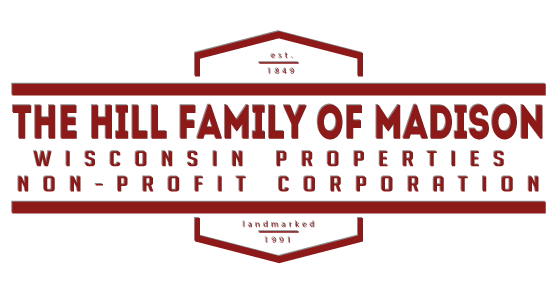Amanda Carmichael Hill’s sister, Chestena Carmichael Josey, and her husband, J. Anthony Josey, moved to Madison, Wisconsin, before John W. Hill and his wife, Amanda. J. Anthony Josey moved to Madison, Wisconsin in 1905, after graduating from Atlanta University, and marrying Chestena Carmichael. J. Anthony Josey enrolled in the University of Wisconsin-Madison’s Law School Class of 1910, becoming one of the first African-Americans to attend the University of Wisconsin’s Law School. John W. Hill came to Madison, Wisconsin to visit J. Anthony Josey, and decided that he and his wife, Amanda, too, would reside in Madison, Wisconsin. J. Anthony Josey and his, wife, Chestina, helped to Found the first Baptist church, Mount Zion Baptist Church in Madison, Wisconsin. J. Anthony Josey later served as Chairman of Mount Zion’s Board of Trustees. In 1916, J. Anthony Josey was a Founder of the Wisconsin Weekly Blade, where he worked as Editor-In- Chief for three decades, taking positions on almost every issue of importance to African Americans in Wisconsin,
Jarius (j) Anthony Josey eventually moved to Milwaukee, and there established the Blade as Wisconsin’s first successful African American newspaper. In the pages of the Blade, J. Anthony Josey courageously advocated against discrimination in juries, the military, and government employment. J. Anthony Josey’s editorials were instrumental in opening up the political process and exposing political discrimination around Wisconsin and America. After J. Anthony Josey’s career with the Blade, he continued to serve his community by opening a real estate business dedicated to helping minority home buyers. As a dedicated servant of Milwaukee, J. Anthony Josey helped to organize and further Milwaukee’s North Side YMCA. J. Anthony Jose’s wife, Chestina Carmichael Hill taught Ceramic at the YMCA. She also worked fervently along the side of her husband ,J. Anthony Josey, participating in all of his endeavors.
J. Anthony Josey earned such acclaim as a champion for equal rights and opportunity, that he was asked to sit on dozens of Milwaukee Committees regarding interracial affairs, and was consulted by sitting United States Presidents. Wisconsin Magazine of History J. ANTHONY JOSEY by Genevieve G. McBride and Stephen R. Byers In the last decade of the last millennium, owing to the growth of African American- owned businesses in Milwaukee, the city began to realize the vision of journalist J. Anthony Josey, a pioneer in its black press almost a century before. “When we can have businesses like the other races, employing our boys and girls, we shall have made a long step in the solution of the problem,” Josey wrote in his Wisconsin Enterprise- Blade. “The men and women who are conducting business houses in Milwaukee are worthy of our support. With our help they can develop into powerful institutions that will give employment to thousands of our boys and girls.” Bronzeville Has New Mayor, and His Election Is Cheered. “Bronzeville” was a term commonly used by African Americans and others in many major Northern cities to describe the segregated sectors that bound communities of color by both custom and law. Many of these sectors became thriving neighborhoods with their own businesses and main streets. In Milwaukee it was Walnut Street that served as such during Bronzeville’s post-World War II heyday. However, in the late 1950s and 1960s, property condemnation and construction had a devastating impact, creating what is now referred to as Milwaukee’s “Inner Core.”(
